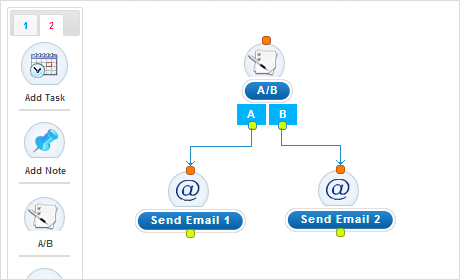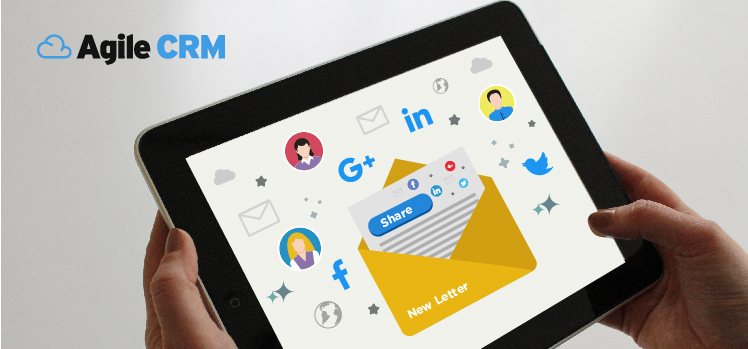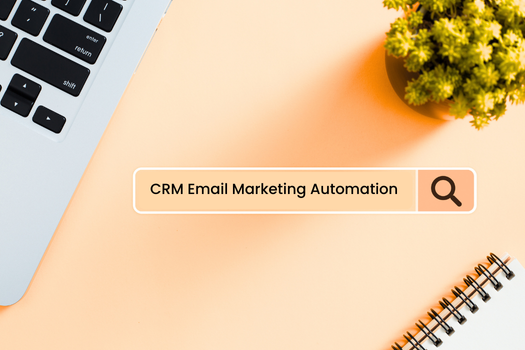
Unlocking the Power of CRM Marketing Newsletters
In today’s competitive landscape, staying connected with your audience is paramount. One of the most effective ways to achieve this is through well-crafted CRM marketing newsletters. These newsletters aren’t just about sending out promotional emails; they’re about building relationships, providing value, and driving conversions. This article dives deep into the world of CRM marketing newsletters, exploring their benefits, best practices, and how to create campaigns that resonate with your subscribers.
What is a CRM Marketing Newsletter?
At its core, a CRM marketing newsletter is a digital communication tool sent to a targeted audience within your Customer Relationship Management (CRM) system. Unlike generic email blasts, CRM newsletters leverage the data stored in your CRM to personalize content, segment subscribers, and deliver relevant information. This targeted approach significantly boosts engagement and conversion rates.
The Benefits of Using CRM for Newsletters
Integrating your newsletters with your CRM offers a multitude of advantages:
- Personalization: CRM data allows you to tailor content to individual subscriber preferences, behavior, and demographics.
- Segmentation: Grouping subscribers based on specific criteria (e.g., purchase history, interests) enables you to send highly relevant messages.
- Automation: Automate the sending of newsletters based on triggers like new sign-ups, abandoned carts, or specific customer actions.
- Improved Targeting: Reach the right audience at the right time with the right message.
- Enhanced Engagement: Personalized and relevant content leads to higher open and click-through rates.
- Better ROI: Increased engagement translates to more leads, sales, and overall revenue.
- Data-Driven Insights: Track key metrics to understand what resonates with your audience and optimize your campaigns.
Key Elements of a Successful CRM Marketing Newsletter
Creating a successful CRM marketing newsletter involves several key elements:
1. Define Your Goals
Before you start crafting your newsletter, determine your objectives. Are you aiming to:
- Increase brand awareness?
- Drive traffic to your website?
- Generate leads?
- Promote a new product or service?
- Nurture existing customers?
Clearly defined goals will guide your content strategy and help you measure the effectiveness of your campaigns.
2. Know Your Audience
Understanding your audience is crucial. Use your CRM data to create detailed customer profiles. Consider factors such as:
- Demographics (age, location, gender)
- Purchase history
- Interests
- Website activity
- Engagement with previous emails
The more you know about your audience, the better you can tailor your content to their needs and preferences.
3. Segment Your Subscribers
Don’t treat all subscribers the same. Segment your audience based on relevant criteria to ensure they receive the most relevant content. Common segmentation strategies include:
- Demographic segmentation: Grouping subscribers based on age, location, gender, income, etc.
- Behavioral segmentation: Segmenting based on website activity, purchase history, email engagement, etc.
- Lifecycle stage segmentation: Targeting subscribers based on where they are in the customer journey (e.g., new leads, existing customers, churned customers).
- Lead scoring segmentation: Grouping leads based on their likelihood to convert.
Segmentation allows you to deliver highly targeted messages that resonate with specific groups.
4. Craft Compelling Content
Your content is the heart of your newsletter. It should be:
- Relevant: Address your audience’s needs and interests.
- Valuable: Provide useful information, insights, or exclusive offers.
- Engaging: Use a compelling tone, visuals, and calls to action.
- Concise: Respect your subscribers’ time by keeping your content focused and easy to read.
Consider the following content formats:
- Blog posts: Share links to your latest blog articles.
- Product updates: Announce new products, features, or services.
- Promotional offers: Offer discounts, promotions, or exclusive deals.
- Customer testimonials: Showcase positive reviews and customer success stories.
- Industry news and insights: Share relevant information from your industry.
- Behind-the-scenes content: Give subscribers a glimpse into your company culture.
5. Design for Readability
A well-designed newsletter is visually appealing and easy to read. Consider these design best practices:
- Use a clean and uncluttered layout.
- Incorporate high-quality visuals (images, videos).
- Use a consistent brand identity (logo, colors, fonts).
- Make your newsletter mobile-friendly.
- Use a clear and prominent call to action.
- Keep it scannable with headings, subheadings, and bullet points.
6. Optimize for Deliverability
Ensure your newsletters reach the inbox, not the spam folder. Follow these deliverability best practices:
- Use a reputable email service provider (ESP).
- Authenticate your domain (SPF, DKIM, DMARC).
- Avoid spam trigger words.
- Keep your email list clean (remove inactive subscribers).
- Warm up your IP address.
- Monitor your sender reputation.
7. Personalize Your Newsletter
Personalization is key to boosting engagement. Use your CRM data to personalize your newsletters in several ways:
- Use the subscriber’s name in the subject line and body.
- Recommend products based on past purchases or browsing history.
- Tailor content to the subscriber’s interests and preferences.
- Send triggered emails based on subscriber behavior.
8. Include a Clear Call to Action (CTA)
Every newsletter should have a clear call to action. Tell your subscribers what you want them to do. Examples include:
- “Shop Now”
- “Read More”
- “Sign Up”
- “Download Now”
- “Contact Us”
Make your CTA prominent and visually appealing.
9. Test, Test, Test
A/B testing is essential for optimizing your CRM marketing newsletters. Test different:
- Subject lines
- Content variations
- Design elements
- Calls to action
- Send times
Analyze your results to understand what resonates with your audience and refine your campaigns accordingly.
10. Measure and Analyze Your Results
Track key metrics to measure the effectiveness of your newsletters. Key metrics to monitor include:
- Open rate: The percentage of subscribers who open your email.
- Click-through rate (CTR): The percentage of subscribers who click on a link in your email.
- Conversion rate: The percentage of subscribers who complete a desired action (e.g., purchase, sign-up).
- Bounce rate: The percentage of emails that are not delivered.
- Unsubscribe rate: The percentage of subscribers who unsubscribe from your list.
- List growth rate: The rate at which your email list is growing.
- Return on investment (ROI): The revenue generated from your newsletter campaigns.
Use your analytics to identify areas for improvement and optimize your campaigns.
Building Your CRM Newsletter Strategy Step-by-Step
Let’s break down the process of creating a successful CRM newsletter strategy:
1. Choose the Right CRM and Email Marketing Platform
Selecting the right tools is the foundation of your strategy. Consider these factors:
- Integration capabilities: Ensure your CRM seamlessly integrates with your email marketing platform.
- Segmentation features: Look for robust segmentation options to target your audience effectively.
- Automation capabilities: Choose a platform that allows you to automate various tasks, such as sending welcome emails, abandoned cart emails, and birthday greetings.
- Reporting and analytics: Select a platform that provides detailed insights into your campaign performance.
- Scalability: Choose a platform that can grow with your business.
Popular CRM and email marketing platforms include:
- Salesforce
- HubSpot
- Zoho CRM
- ActiveCampaign
- Mailchimp
- ConvertKit
- GetResponse
2. Import and Clean Your Data
Before you start sending newsletters, import your customer data into your CRM and email marketing platform. Ensure your data is clean and accurate. This involves:
- Removing duplicate contacts.
- Correcting errors in email addresses and other data fields.
- Appending missing information where possible.
A clean database is crucial for delivering personalized and relevant content.
3. Design Your Newsletter Template
Create a visually appealing and mobile-friendly newsletter template. Use your brand’s colors, fonts, and logo. Consider using a drag-and-drop editor for ease of use. Ensure your template is responsive and displays correctly on all devices.
4. Develop Your Content Calendar
Plan your newsletter content in advance. Create a content calendar to schedule your newsletters and ensure a consistent flow of valuable information. Consider the following:
- Frequency: Determine how often you will send your newsletter (e.g., weekly, bi-weekly, monthly).
- Topics: Brainstorm relevant topics that align with your goals and audience interests.
- Content formats: Mix up your content formats to keep your audience engaged (e.g., blog posts, product updates, customer testimonials).
- Calls to action: Plan your calls to action for each newsletter.
5. Automate Your Newsletter Campaigns
Automate your newsletter campaigns to save time and improve efficiency. Examples of automation include:
- Welcome series: Send a series of emails to new subscribers to introduce your brand and provide valuable information.
- Abandoned cart emails: Automatically send emails to customers who have abandoned items in their shopping carts.
- Birthday greetings: Send personalized birthday emails to show your customers you care.
- Re-engagement campaigns: Send emails to inactive subscribers to encourage them to re-engage with your brand.
6. Optimize and Iterate
Continuously monitor your campaign performance and make adjustments as needed. Analyze your results and identify areas for improvement. Use A/B testing to experiment with different subject lines, content variations, and calls to action. Refine your strategy based on your findings to maximize your results.
Advanced CRM Newsletter Strategies
Once you’ve mastered the basics, consider these advanced strategies:
1. Dynamic Content
Use dynamic content to personalize your newsletters even further. Dynamic content allows you to display different content blocks to different subscribers based on their CRM data. For example, you can show different product recommendations based on a subscriber’s past purchases or browsing history.
2. Behavioral Targeting
Track your subscribers’ behavior on your website and in your emails. Use this data to trigger highly targeted emails. For example, if a subscriber clicks on a specific product category in your newsletter, you can send them a follow-up email with related products.
3. Segmentation Based on Customer Lifetime Value (CLTV)
Segment your audience based on their CLTV. This allows you to prioritize your most valuable customers and tailor your messaging accordingly. You can offer exclusive deals, early access to new products, or personalized support to your high-value customers.
4. Integration with Other Marketing Channels
Integrate your CRM newsletter campaigns with other marketing channels, such as social media and paid advertising. This allows you to create a seamless customer experience and amplify your message. For example, you can use retargeting ads to reach subscribers who have clicked on links in your newsletter.
5. Use Artificial Intelligence (AI)
Leverage AI-powered tools to personalize your newsletters and improve your results. AI can help you with:
- Subject line optimization
- Content recommendations
- Send time optimization
- A/B testing
Avoiding Common CRM Newsletter Mistakes
Avoid these common pitfalls to maximize your newsletter’s effectiveness:
1. Sending irrelevant content
Sending generic content that is not relevant to your subscribers’ interests is a surefire way to damage your engagement. Always tailor your content to your audience’s needs and preferences.
2. Over-selling
Focus on providing value and building relationships, not just selling. Don’t bombard your subscribers with constant sales pitches. Instead, offer valuable information, insights, and exclusive deals.
3. Neglecting mobile optimization
Ensure your newsletters are mobile-friendly. Most people read emails on their smartphones, so it’s crucial that your newsletters are designed to display correctly on all devices.
4. Ignoring your metrics
Failing to track and analyze your results is a recipe for failure. Monitor your key metrics and use the data to optimize your campaigns. Don’t be afraid to experiment with different strategies to see what works best.
5. Not complying with regulations
Ensure you comply with all relevant email marketing regulations, such as GDPR and CAN-SPAM. This includes providing an unsubscribe option and obtaining consent from your subscribers.
Conclusion: Mastering the Art of CRM Marketing Newsletters
CRM marketing newsletters are a powerful tool for building relationships, driving conversions, and growing your business. By understanding the benefits, best practices, and advanced strategies outlined in this article, you can create compelling campaigns that resonate with your audience and achieve your marketing goals. Remember to focus on personalization, segmentation, and providing value to your subscribers. Continuously test, optimize, and refine your campaigns to maximize your results. By embracing the power of CRM and crafting irresistible newsletters, you can transform your email marketing into a high-performing engine for growth.

